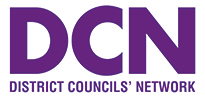Spending and performance data shows no benefit from proposed 500k population size
Claims that mega councils with populations in excess of 500,000 will save money and improve services have been plunged into further doubt by new research.
The Government has embarked on the biggest reorganisation of local government in 50 years, seeking to merge county and district councils covering 20 million people to create new unitary councils with typical populations of half a million people.
However, the District Councils’ Network (DCN) analysis of data covering existing English unitary councils shows the biggest councils do not outperform their smaller counterparts on either spending or service delivery. Indeed, on some measures smaller councils outperform larger ones. The key findings include:
- There is little or no evidence to support a preference for large unitary councils and no evidence to support the 500k population level.
- The bulk of the data analysed shows a non-existent or faint relationship between a council’s population and its outcomes.
- When there is an apparent correlation between population size and outcomes, it rarely favours larger councils.
- The evidence gives no reason to assume that smaller unitary councils will be less efficient, sustainable or effective due to their size.
The Government has previously acknowledged it has no independent evidence justifying a population size of 500,000 for new unitary councils. Freedom of Information requests have revealed that ministers’ justification for the 500,000 figure rests on a 2020 PwC report commissioned by an advocacy group for larger councils. This report relies overwhelmingly on forecasts about potential future savings.
DCN’s analysis uses a well-established statistical technique which assesses England’s existing 132 unitary councils’ actual performance on a range of metrics against their population size. This is then plotted on graphs to model the expected performance of councils of each population size.
You can read the full analysis here: LGR population size and council performance – analysis slides
A summary of the findings can be seen here: Local Government Reorganisation – Summary of DCN analysis on council size and performance
Once account was taken of factors like the age structure, commuting patterns and prices in a local area, population size was left as having, what the authors describe as, an overall “negligible impact on the predictive power of the model”. However, among DCN’s specific findings was:
- Eight of the 10 lowest spending unitary councils have a population below the median level;
- While the very smallest existing unitary councils may spend somewhat more per head of population, there appears to be a tipping point above a population of 350,000 after which greater population is associated with higher expenditure;
- Larger councils ran into slightly more financial problems, needing more Exceptional Financial Support from the Government relative to the size of their budgets;
- Median-sized councils performed slightly better than councils with 500k populations on eight key service performance measures. There was not a single key performance measure, spanning all of local government’s work, in which the larger councils performed appreciably better.
Cllr Richard Wright, Chair of the District Councils’ Network (DCN), said: “We are told that mega councils will be more efficient but the evidence shows that population size of councils is essentially irrelevant to their financial health and, if anything, the largest councils’ services perform less well.
“It’s astonishing that the Government has not undertaken its own analysis of the relative merits of unitary councils of different population sizes. But our findings should lead ministers to admit that there’s no evidence that biggest councils cost taxpayers less.
“While you can of course get both large and small councils in robust financial health, councillors and senior managers will often find it easier to spot efficiencies if an authority is smaller, because they are less removed from front-line staff and service users.
“And it’s also demonstrably true that the biggest councils are further from their communities, hindering them when it comes to representing the interests of local people and businesses.
“It’s time to move on from imposing arbitrary population targets on new councils, which will often lead to mega councils that ride roughshod over the views of local communities. In the spirit of devolution, local communities should be free to determine their local areas’ boundaries based on meaningful factors like local identity, travel to work areas, transport links, and what lines up best with the NHS and police boundaries.”
Cllr Wright also restated the DCN’s support for reorganisation if it ensures that councils remain genuinely close to communities, it enhances rather than reduces local democracy and it instigates wider public service reform to move local services from a reactive to a preventative ethos.
Reorganisation
Local government reorganisation is due to result in all 21 county councils, which run services including social care, SEND and highways, merging with 164 district councils, which oversee housing, planning, parks, leisure centres and regeneration, to create new unitary authorities. The Government has asked local areas to devise proposals to set out the new authorities’ boundaries. Councils in Surrey and the six areas in the Devolution Priority Programme have already been asked to submit proposals. Other areas have until November to do so.
The Government has said new councils are likely to have a typical population size of 500,000. They would be among the largest in England. Only 12 councils currently exceed the 500,000 suggested population size whereas 120 unitary councils are smaller.
DCN previously revealed average Band D council tax is £250 higher in councils with populations exceeding 500,000. You can read DCN’s full analysis of this here.





